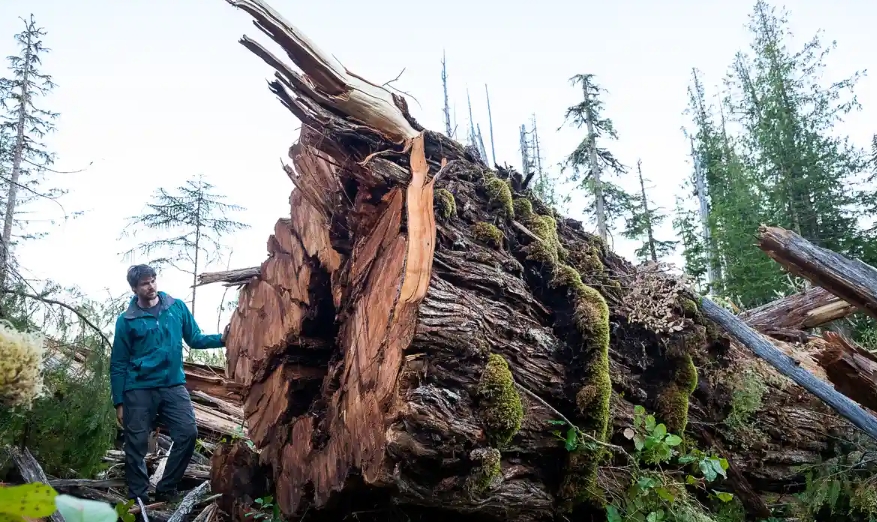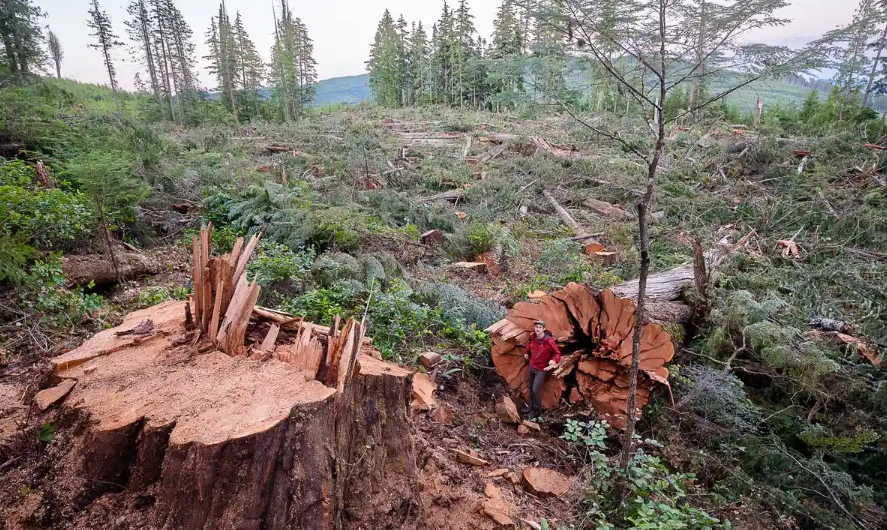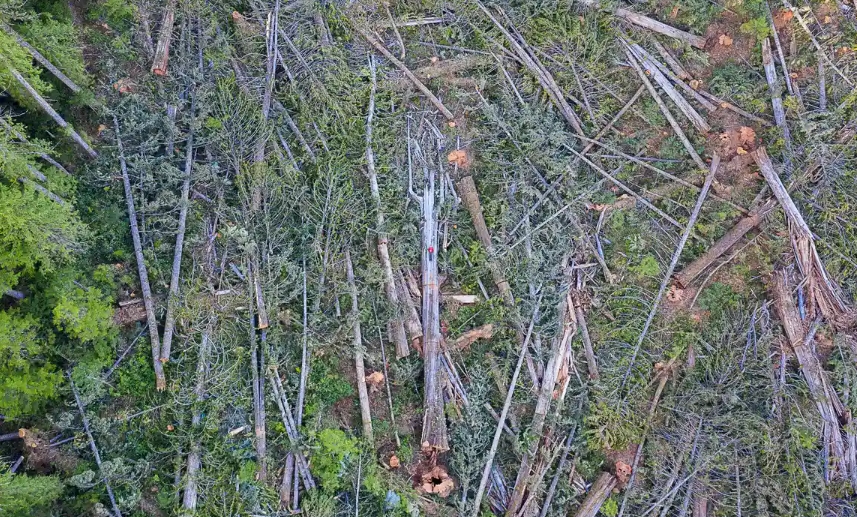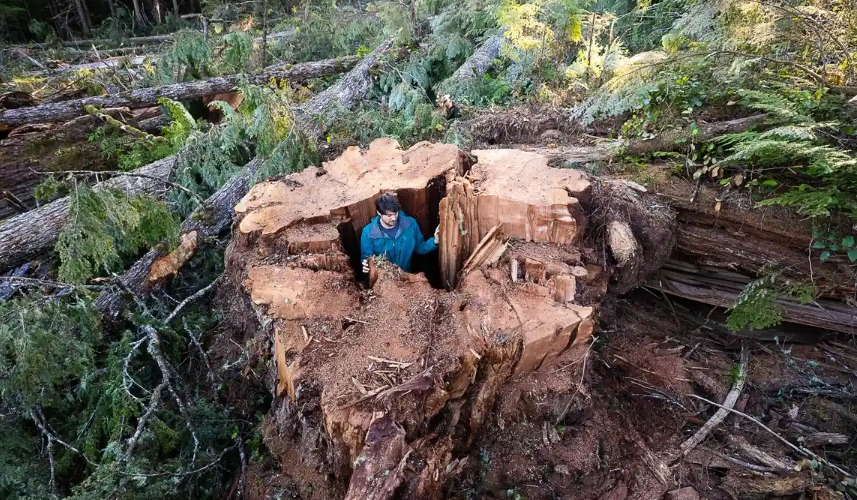Activists have criticized the government’s old-growth forest protection plan, citing photographs of a historical tree felled in western Canada. They argue that logging companies are endangering fragile ecosystems by hastily harvesting timber.
In an attempt to document potential old-growth forests, TJ Watt, a photographer, and Ian Thomas from the environmental advocacy group Ancient Forest Alliance journeyed to a stand of western red cedars located on Vancouver Island in British Columbia. Upon arriving at Quatsino Sound forest, however, they discovered that hundreds of trees had been recently cut down.
Watt expressed deep emotional distress upon witnessing the sight of fallen trees that had lived for over 500 years, and were now gone forever in the blink of an eye. He had photographed the forest as part of a grant from the Trebek Initiative, a partnership between the National Geographic Society and the Royal Canadian Geographical Society that was named in honor of the late Jeopardy host.

Watt’s photographs have previously been utilized to illustrate the significant transformation of landscapes that occurs following the clearance of old-growth forests. In November 2021, due to growing public outrage over the destruction of old-growth trees, the government of British Columbia postponed logging activities in 2.6 million hectares of the most vulnerable forests. Additionally, the BC government has committed to safeguarding 30% of the province’s land area by 2030, as part of a larger effort across Canada to fulfill biodiversity conservation targets.
Despite presenting its plan to defer logging, the province has only secured approval for less than half of the designated areas, as consent from First Nations communities is mandatory. Several First Nations are directly involved in the logging industry and would experience a reduction in income if logging activity in their territory was suspended. The Ancient Forest Alliance and similar groups argue that additional funding is necessary to compensate for the loss of forestry revenue among affected First Nations.
Detractors of the province’s deferral strategy argue that there are flaws in the initial recommendations, including an acknowledgment by the technical advisory panel that certain forests may have been erroneously categorized. As for the cutblock discovered by Watt and Thomas, which was owned by Western Forest Products and logged at the end of 2022, it was designated as being 210 years old, which is below the province’s minimum threshold of 250 years to qualify as old-growth. The company has yet to respond to a request for comment.

Watt remarked that the discovery of the logged cutblock highlights how the logging sector is rushing to harvest the largest and most valuable trees while they are still available. He further noted that planting new trees does not replace the intricate ecosystem of an old-growth forest. Additionally, the realization that the forest could have potentially been preserved had it been accurately identified by the province adds another layer of disappointment.
At present, there are no systems established for the public or industry to indicate forests that contain trees that surpass the age threshold established by the province.
Watt suggested that citizens and scientists should have the ability to identify and bring attention to areas that were missed for deferral, given the province’s admission that the data might be flawed. He also believes that logging companies should be mandated to compare their planning and surveys to the province’s established criteria.
Logging companies are not obligated to harvest all trees within a given cutblock. In 2011, logger Dennis Cronin came across an impressive Douglas fir on the west coast of Vancouver Island that was likely over 1,000 years old. Although the rest of the forest was cleared, the tree, known as Big Lonely Doug, was left untouched.
Watt stated that while progress has been made, there are still gaps in the system that must be addressed. It is critical to ensure that the province fulfills all of its commitments to safeguard these vulnerable ecosystems and that nothing falls through the cracks. He also emphasized that there is no justification for felling centuries-old trees when they are viewed firsthand.


